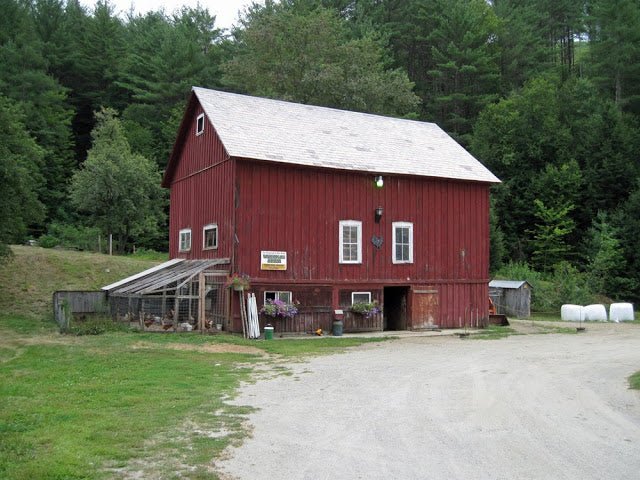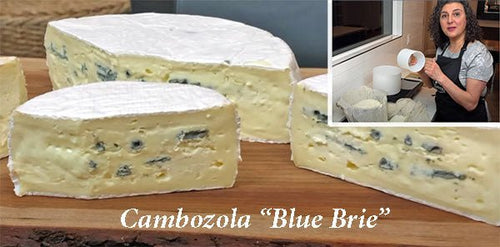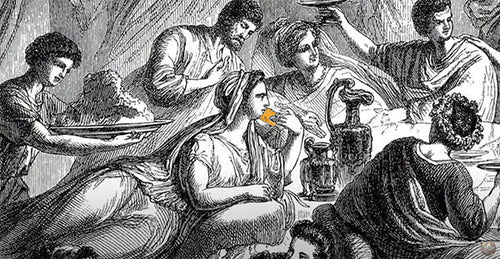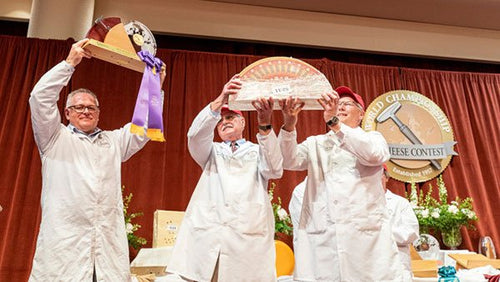Real Milk vs Processed Milk- A Very Important Issue
Do we, as individuals in this country have a constitutional right to eat what we want?
Do farmers in this country have the right to sell us what we want?
These are hotly debated questions right now and many of the folks who are trying to supply the answers convened last weekend at the Raw Milk Symposium (organized by the Raw Milk Network) at UMass.
The symposium was the kickoff for 3 days of workshops sponsored by the Northeast Organic Farming Association of Massachusetts (NOFA). (The symposium was filmed by Northampton Community Television, but the date for airing has not been set.)
Sally Fallon Morrell and her husband, Geoffrey, have decided to make raw milk cheese at a farm they have purchased in Maryland. They will be raising Jerseys and making aged Blue, Parmesan and Cheddar.
They are participating in a pilot program sponsored by the State of Maryland. (We’ll do an article soon about this.) Their cheeses will have to be aged at least 60 days, by US law. Sally pointed out that the European Union does not require this, so fresh, raw cheeses are available throughout Europe.
When she isn’t farming, Sally is the president of the Weston A. Price Foundation (westonaprice.org) and the author of “Nourishing Traditions.” She was the first keynote speaker at the symposium. She spoke about the nutritional value of real milk. (Sally takes care to refer to whole raw milk from grass-fed animals as “real milk” because low fat milk from confinement dairies is sometimes unpasteurized and sold as “raw” milk though it is not anywhere near as healthy as “real” milk.)
She pointed out that the amount of nutrients in real milk is the same as the amount in pasteurized milk (a fact that is often used to justify pasteurization). However, the nutrients in real milk are made available to the human body, whereas the nutrients in pasteurized milk are not. (The carrier protein is inactivated when the milk is heated.) As a result, babies who are fed pasteurized milk are nowhere near as healthy as those who are fed real milk. She cited study after study to support this.
She also spoke about the studies which claim to prove that real milk is the source of illness and disease. Many of those studies have been examined and found to be fake and misleading. One, in particular, by the CDC, has been discredited. (This study was cited by Maureen Turner in a recent article in the Advocate.) On the basis of flawed studies, the US Food and Drug Administration officially “warns consumers about the dangers from bad bacteria in raw milk.”
The second keynote speaker, Pete Kennedy, Esq., of the Farm-to-Consumer Legal Defense Fund spoke about the legal issues involved in selling and transporting real milk. He spoke about some of the obstacles which must be overcome by real milk advocates:
1. The misuse of testing as a means to shut down farms selling real milk. Many of the test results by state agencies are not substantiated by private tests. There are examples of this in David Gumpert’s book, “The Raw Milk Revolution.”
Note: David Gumpert (below) attended the symposium and participated in the question and answer session. He probably knows as much or more than anyone about the real milk situation in this country.
2. Distribution of real milk is a pressure area with agencies working to shut down the agents who transport the milk from the farms to the customers.
3. The big dairies are exerting pressure. Many of their contracts with small farms entitle them to all the milk the farms produce. Therefore, these farms cannot sell to the large co-ops if they are also selling raw milk to consumers. Organic Valley, as one example, claims they will be enforcing these contracts after January 1, 2011.
4. Insurance companies are threatening to cancel policies of farms selling real milk. Whole Foods stopped selling it because of liability problems.
5. The Food Safety Bill- S510 may come up again and it gives the FDA more power to regulate interstate commerce and to set performance standards. If they require small farmers to file a “service plan” with the government, that will be a way to discourage small dairy farmers.
The final third of the program was the panel discussion. Sally and Pete joined three farmers from New England-
Lindsay Harris from Family Cow Farmstand in Hinesburg, VT bought her first milk cow 4 years ago. At the time, in Vermont, farmers could sell only 6 gallons of raw milk/day and they were not allowed to advertise. Since then, largely because of the efforts of Rural Vermont, a small farm advocacy group, Vermont has doubled the 6 gallon restriction and now allows advertising. Lindsey believes in working with the Department of Agriculture to establish regulations, because otherwise she thinks the agency has complete power to do whatever they want.
Pam Robinson from the Robinson Farm in Hardwick, MA, has been selling raw milk for 5 or 6 years. She and her husband found that conventional farming was not financially viable. By becoming one of only 3 or 4 organic dairies in the state, they have gotten a fair price for their milk and they have established a real connection to their customers. Now, they are building a cheesemaking factory and they will begin selling raw milk cheese in September.
Chris Newton from Baldwin Brook Dairy in Canterbury, CT, milks 15-18 Jerseys twice daily and he sells both raw and pasteurized milk (the pasteurized milk goes to artisinal cheesemakers in the area). Connecticut allows retail sales of real milk, so Chris and his wife, Mavis, have 14 retail accounts in the state. They deliver milk 3 times/week. Chris is proud that their milk has a somatic cell count of 50-75,000, while the max allowed by the state is 750,000. He is working with the Connecticut Farmstead Dairy Alliance to raise the standards in his state.
During the question and answer period, Winton Pitoff (Coordinator of the Raw Milk Network) asked, “What works when talking to regulators?” The panelists agreed that the science speaks for itself. However, more research needs to be funded because most of it was done before 1945.
It was also mentioned that younger regulators tend to be more receptive to change in many cases (because they have not been indoctrinated with the value of pasteurization.) Sally recited a well-known quote, “Science is advanced one retirement at a time.”
Tasha Connor and her friend Paul Posillo drove up from Pacedale, RI to attend the days activities. They couldn’t stay for the whole weekend because Tasha had to return to milk her goats. She would love to expand her herd and sell raw milk, but she wanted to know more about the issues involved. Rhode Island is one of 9 states that does not allow the sale of raw milk.
After attending the symposium, Tasha was pretty sure she won’t be getting certified to sell raw milk anytime soon. She just wants to make a living doing what she enjoys, and the raw milk opposition is too fierce right now. Maybe someday . . .
























































































































































